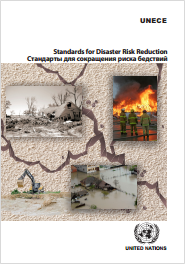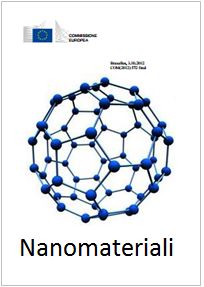Informazione tecnica HSE / 25 ° anno
/ Documenti disponibili:
45.641
/ Documenti scaricati: 34.674.916
/ Documenti scaricati: 34.674.916

Disaster risk prevention can be regarded as a facet and as a result of sustainable development.
Standards help businesses and organizations progress towards all three dimensions of sustainable development –environmental, economic and social – and at the same time help them address and, in some cases, completely master risks that without proper management would have disastrous consequences.
In each of these dimensions, at the same time as standards help deliver on development and growth, they also help deliver on disaster risk reduction, allowing a better or at least a different trade-off between the interests of “now”, and those of future generations.
The two very broad families of standards: environmental management standards and social responsibility standards have a potential to be used much further in reducing the accumulation of disaster risks.
Protecting “ecosystem services” – defined as the benefits that people derive from the environment – can both save lives and protect livelihoods.
In fact, practices that protect the integrity and diversity of nature and ensure a wise use of natural resources maximize the degree to which the environment can absorb shocks.
A variety of voluntary approaches are available to firms that want to monitor and minimize the impact of their operations on the immediate ecosystem that surrounds their operations, and/or contribute to preserving the environment on a broader or indeed global scale. Some of these voluntary environmental programmes apply to specific industrial sectors (such as the “Responsible Care” programme for the chemical industry, or FSC for the forestry and paper industries), while others, like ISO 14000 can be adopted by organizations of all types and in any industrial sector.
The reach and uptake of ISO 14000 is particularly significant. Since its launch in 1995, ISO 14000 has become the most widely adopted voluntary environmental standard: by 2012, there were almost 300,000 certified organizations across more than 150 countries, with the majority of certifications in Europe, China and Japan.
Environmental management systems are typically implemented together with a number of other standards developed by international, regional and national standards bodies, as well as statutory requirements, which also contribute directly to ensuring that products, systems and services are designed, manufactured, operated and disposed of in a way that protects the natural environment by increasing reliability, minimizing emissions, reducing the use of natural resources and energy, etc.
While being neither a requirement nor a guarantee, establishing an EMS and being subject to external certification can be a significant driver for and shows a commitment to safer and more responsible business practices, which have a key role in preventing man-made disasters and reducing the impact of natural disasters. Another area where standards and best practice can contribute to build resilience is corporate social responsibility (CSR) defined as the “responsibility of an organization for the impacts of its decisions and activities on society and the environment, through transparent and ethical behaviour that contributes to sustainable development” (ISO 26000).
The ISO 26000 Standard on Social Responsibility is a unique document, providing guidance applicable to different kinds of organizations that want to “incorporate social and environmental considerations in their decision making process”, and “be accountable for the impacts of its decisions and activities on society and the environment”.
The aim of this document is to help bring voluntary standards into the toolbox of disaster risk reduction, including both by encouraging their use by business and by enhancing their role in regulatory practice and policy-making more generally.
UNECE 2015

Aspetti collegati alla sicurezza
I nanomateriali sul luogo di lavoro, nei prodotti di consumo e nell'ambiente
Le nanoparticelle naturali o formate a...
ID 21375 | 16.02.2024
Rettifica del regolamento delegato (UE) 2024/197 della Commissione, del 19 ottobre 2023, che modifica il regolamento (...

Ministero della Salute
Aggiornamento delle Tabelle nn. 3, 4, 5 e 7 della XII edizione della Farmacopea ufficiale della Repubblica italiana approvata con decreto 3 dicembre 2008 e...
Testata editoriale iscritta al n. 22/2024 del registro periodici della cancelleria del Tribunale di Perugia in data 19.11.2024